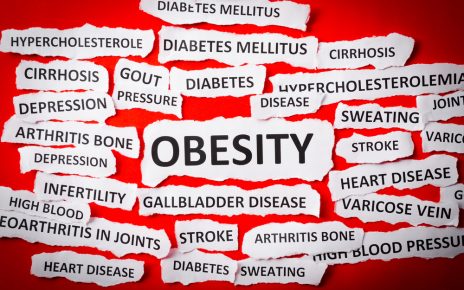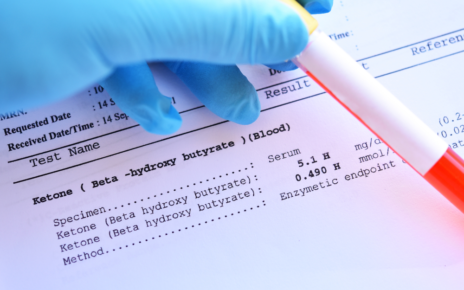The keto flu can be a real b****.Starting the ketogenic diet has been associated with several amazing benefits, key of which is faster weight loss. The popular ketogenic diet involves consumption of a diet that is not only low in carbohydrate but has a high-fat content as well as a moderate amount of protein.
Although the ketogenic diet is considered safe for most people and has even been endorsed by some celebrities, it has also been linked tosome side effects, including the keto flu or carb flu. But what really is the keto flu?
What Is Keto Flu?
When some people start the keto diet, they experience certain symptoms similar to the flu, hence the name “keto flu.” These symptoms result from the changes the body undergoes in trying to adapt to a diet containing little carbohydrates. The body changes from using glucose as its main fuel to breaking down fat to provide energy. It is this metabolic shift from glucose to fat that is responsible for the flu-like symptoms a person feels as the body enters ketosis for the first time.
The keto flu is thus a natural response the body gives and the symptoms an individual presents with may be very similar to those experienced when withdrawing from an addictive substance. While the keto flu is a completely natural process, it may make some persons decide to withdraw from the keto diet. Symptoms like fatigue, nausea, and headaches may be experienced by some, especially during the first few days after the start of the diet; however, these symptoms are believed to be temporary and may disappear after a while.
The Causes
One key aspect of the ketogenic diet is that it lowers the insulin levels in the body. This reduction in the level of insulin allows the liver to begin conversion of fat into ketones. The ketones are then used by the body to replace glucose. When the body now fully utilizes ketones and fat to produce energy, it is said to be in a state of ketosis. Ketosis, however, is not the cause of the keto flu, but it is the response the body gives to carbohydrate restriction that is responsible for the symptoms.
Vital organs, especially the brain, uses glucose continuously. Starting a ketogenic diet and allowing the body to enter ketosis creates an energy deficit. Before the body can switch fully to deriving energy from fat, an individual may experience the keto flu. Undernutrition due to inadequate planning can also cause the keto flu. The lack of planning can cause an individual to be calorie deficient, causing the body to release hormones to provide glucose for the brain. During this period, an individual may have symptoms of the keto flu.
It is important to mention that although the keto flu happens to some people who start the ketogenic diet, it may not necessarily occur in all persons. Changing diet and forcing the body to enter ketosis; thus, it may not cause an individual to develop the keto flu. As already mentioned, the flu-like symptoms result from a shift from using glucose to produce energy to using fat. Some other factors could cause the keto flu, including hormonal response, decrease in blood glucose level, and even electrolyte imbalances.
The Symptoms of Keto Flu
Several symptoms have been reported by those who have experienced the keto flu at the start of the keto diet. Some of the common symptoms include fatigue, headaches, and cramps. Fatigue can be linked directly with carbohydrate withdrawal. When an individual starts the keto diet, the muscles are deprived of energy derived from carbohydrates resulting in muscle fatigue. Some new keto dieters have also reported experiencing decreased mood together with the inability to concentrate. This can be as a result of a reduction of glucose supply to the brain. The lack of concentration can be attributed to the time the brain has to stay before it is able to use ketones to provide the necessary fuel for use.
Headaches can occur for a number of reasons when one has the keto flu. On the one hand, it can result from cutting off the glucose supply to the brain without any immediate substrate to replace that source of energy that was cut off. Imbalances in the electrolyte may also result in headaches. When the body is prevented from getting access to important electrolytes like sodium and potassium, electrolyte related headaches may occur. Recall that during the ketogenic diet, the insulin levels drop significantly. A low insulin level triggers the excretion of sodium in the urine. Without replacement of the lost sodium, imbalances may occur and cause headaches during the first few days of starting the keto diet.
Muscle cramps can affect any muscle in the body. The heart is not left out since serious complications can cause abnormality in heart rhythm. Cramps may be as a result of electrolyte imbalances, especially magnesium and potassium. Some who have recently started the keto diet has also experienced keto breath. Keto breath refers to the fruity odor produced by excretion of acetone in the breath. It is usually unpleasant and can last for a few days to a week after the start of the ketogenic diet. Some other symptoms of the keto flu include but are not limited to nausea, dizziness, irritability, constipation, cravings, insomnia, stomach pain, vomiting, and diarrhea. It is important to know that the duration of these symptoms varies from one person to another. For some, the symptoms may last for a week while for others, it may take longer.
The Remedies
Several remedies have been indicated in reducing the flu-like symptoms associated with the keto diet. These remedies will help new keto dieters transition smoothly from using carbohydrates as fuel to relying solely on fat for energy. Recall that imbalances in electrolytes are responsible for headaches and muscle cramps. One remedy for these symptoms of the flu is to replace dietary electrolytes. Drinking plenty of water, proper electrolyte supplementation, and adequate consumption of salt are important steps to take to restore electrolyte balance in the body. Supplements containing magnesium and potassium may also be used to prevent muscle cramps.
Since fatigue is linked with carbohydrate restriction, which in turn leads to muscle fatigue, it is important to restore the energy supplies of the muscle. To do this, an individual needs to eat foods rich in fat so that the energy produced can be utilized by the muscles, thus preventing fatigue. Staying well hydrated during the start of the keto diet may also help reduce the risk of dehydration and is important in preventing muscle cramps and fatigue. It is also important for those just starting the keto diet to ensure they get adequate sleep. This can easily be done by taking a bath before bedtime, reducing caffeine intake, and cutting out ambient light to create an environment to promote sleep.
To reduce cravings at the start of the keto diet, eating a healthy amount of fat has been shown to be of help. While it may not be possible for one to eliminate carbohydrates when starting the keto diet, an individual may choose to do so gradually. Slowly cutting down carbs can make the transitioning process smoother and decrease the symptoms of the keto flu.



